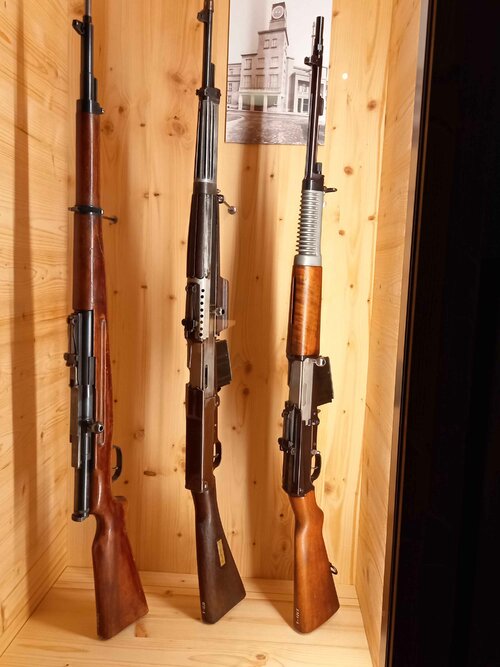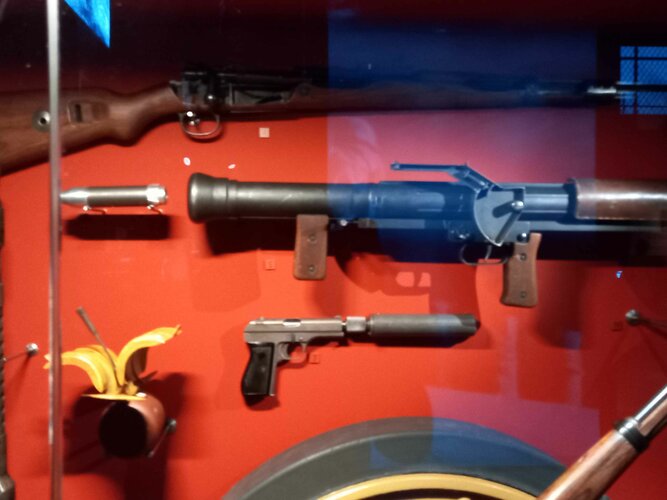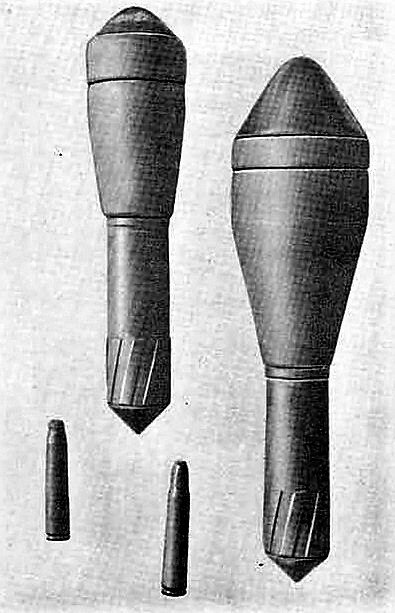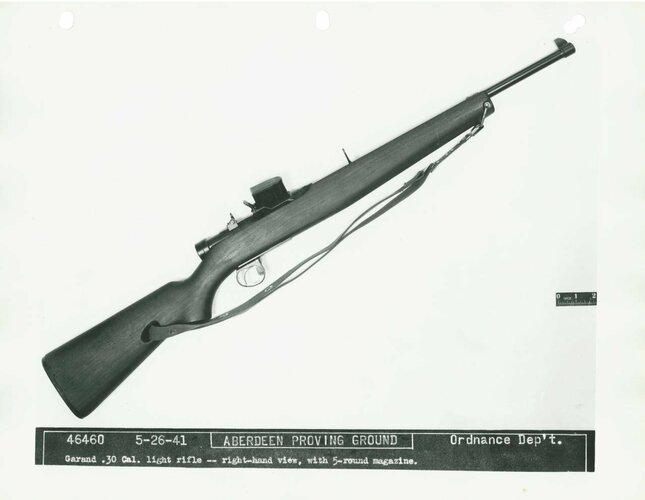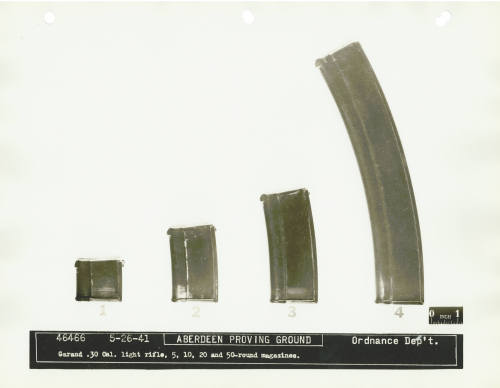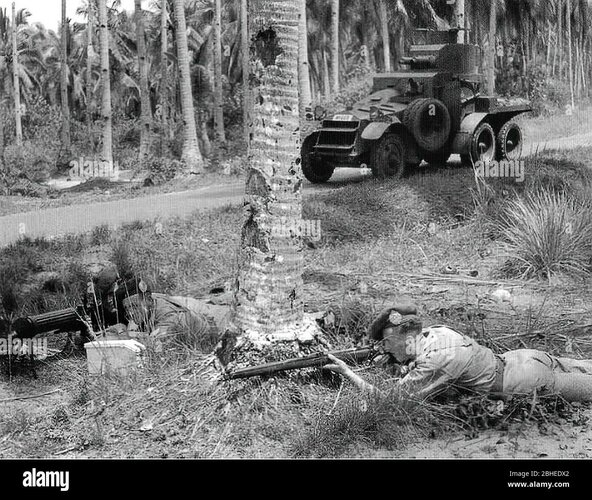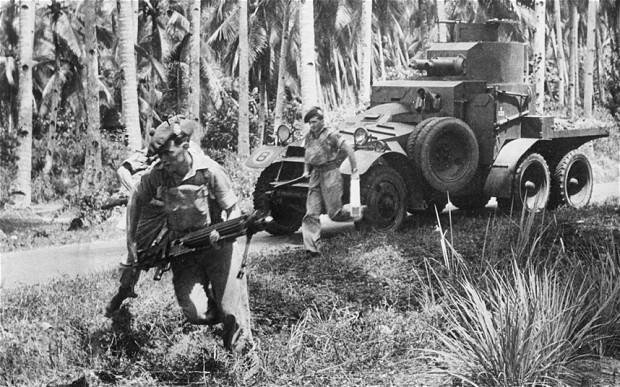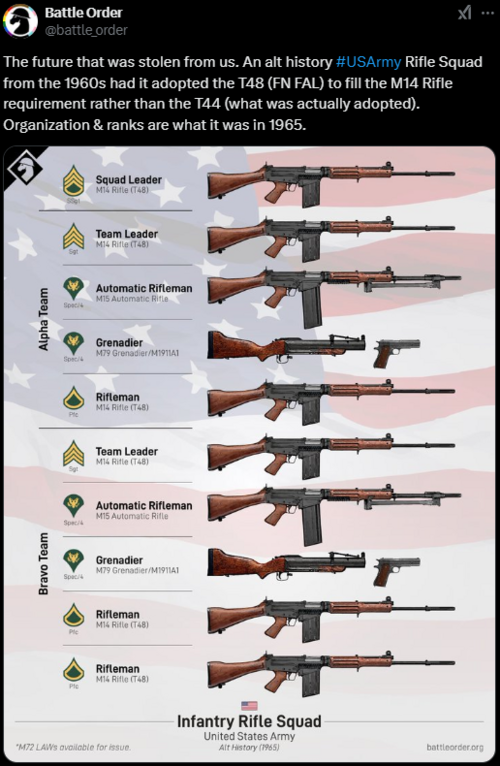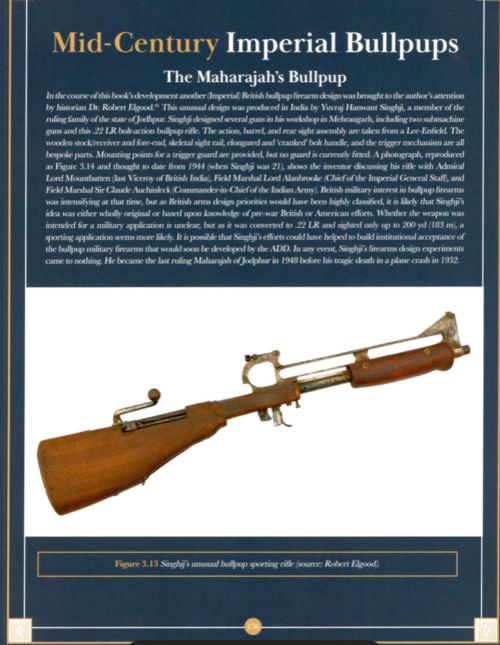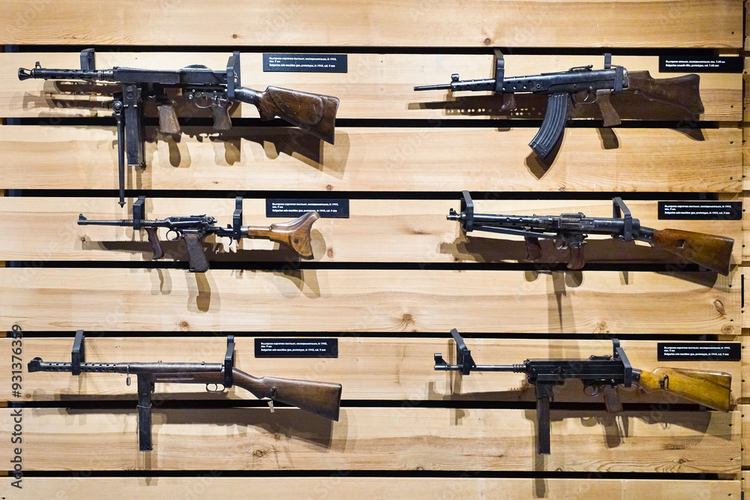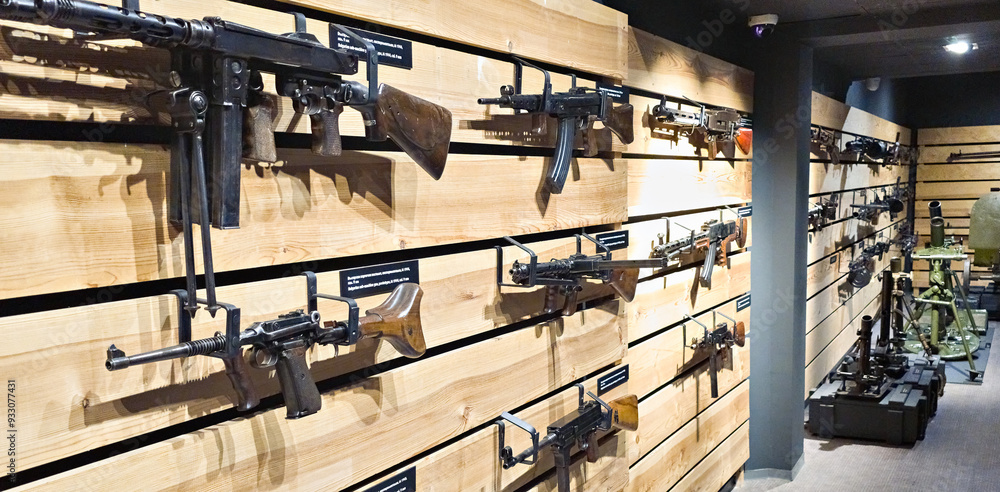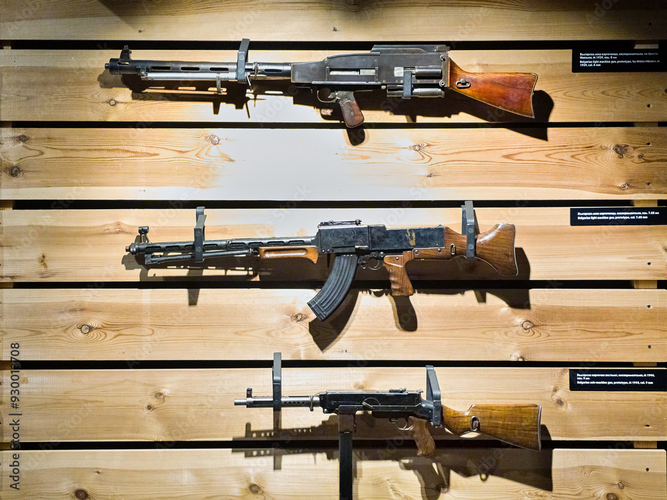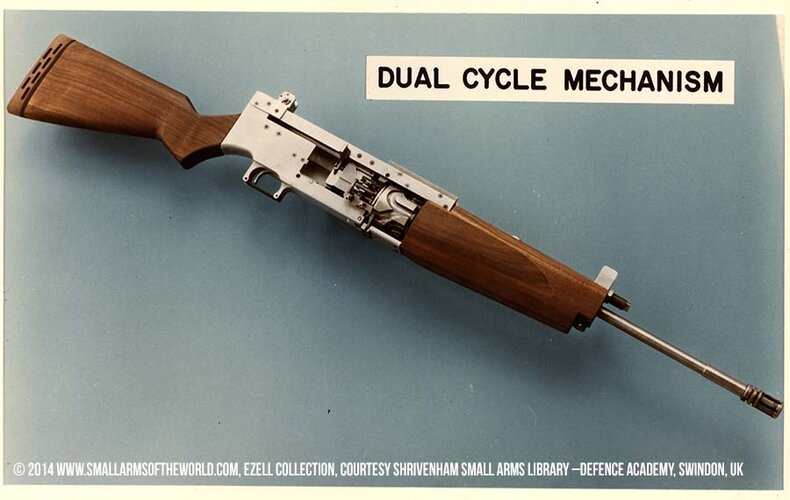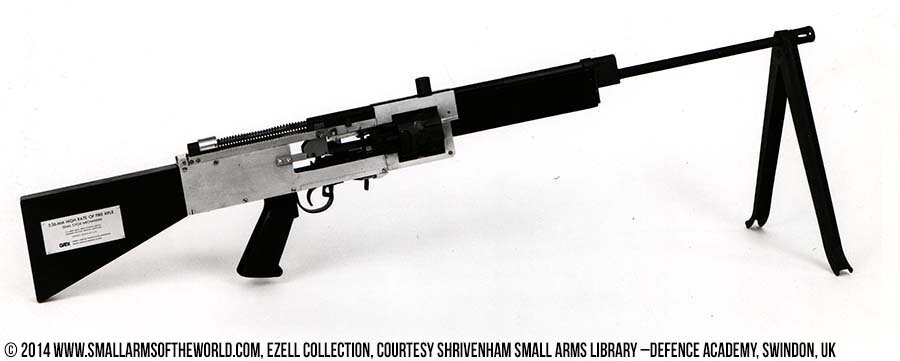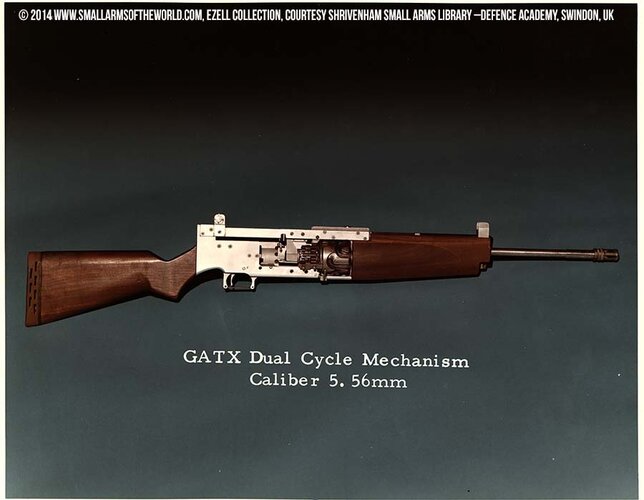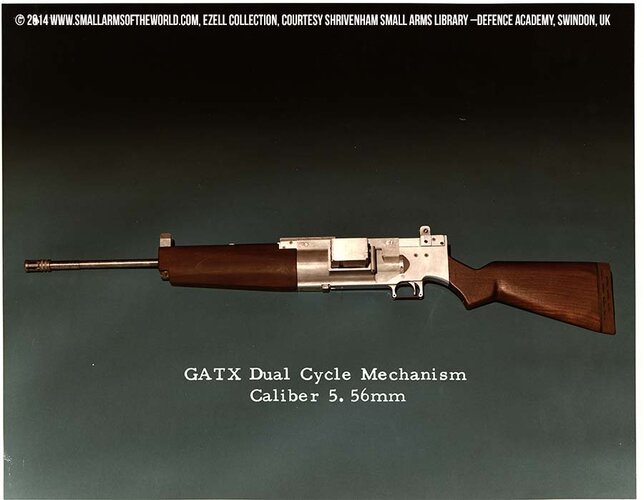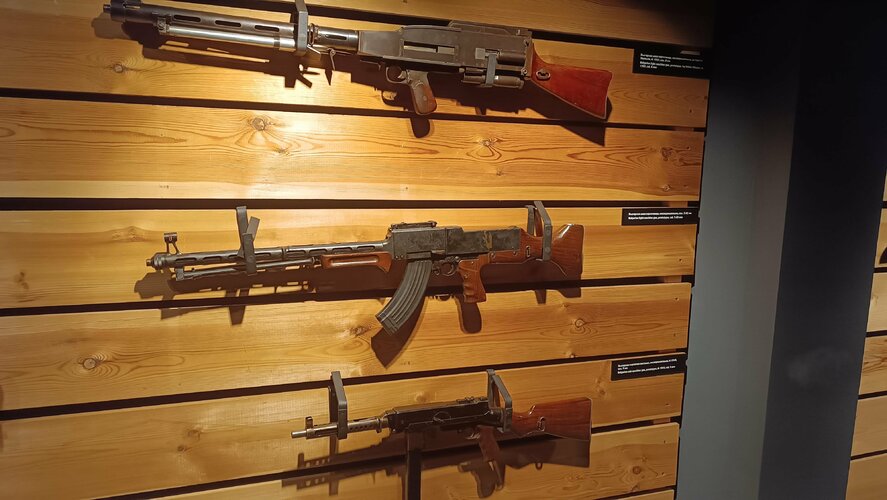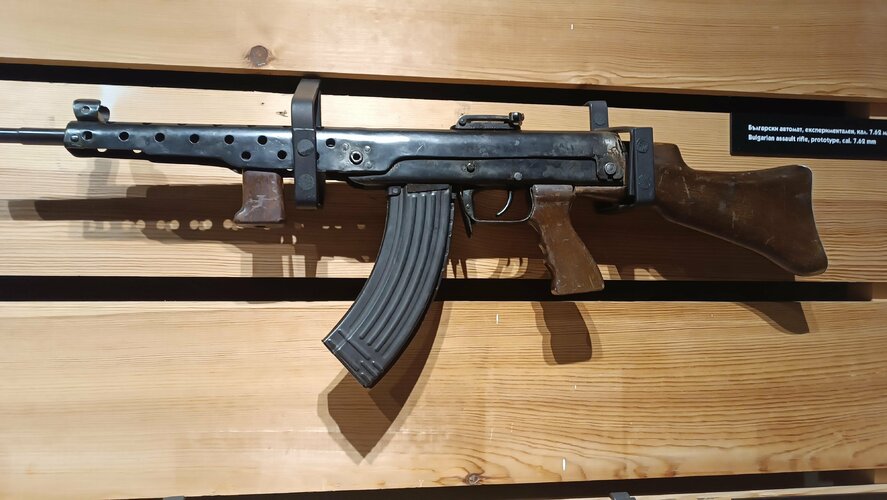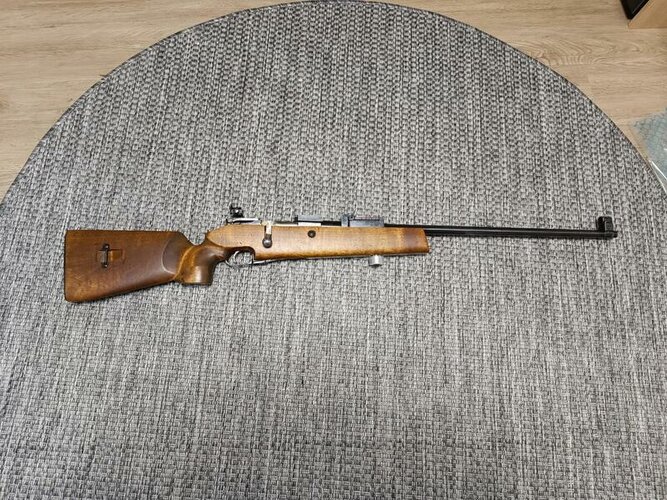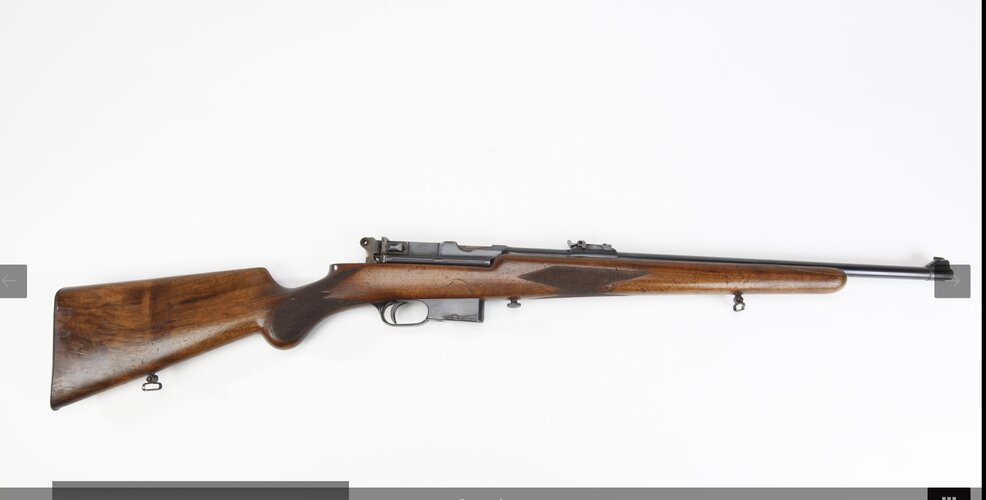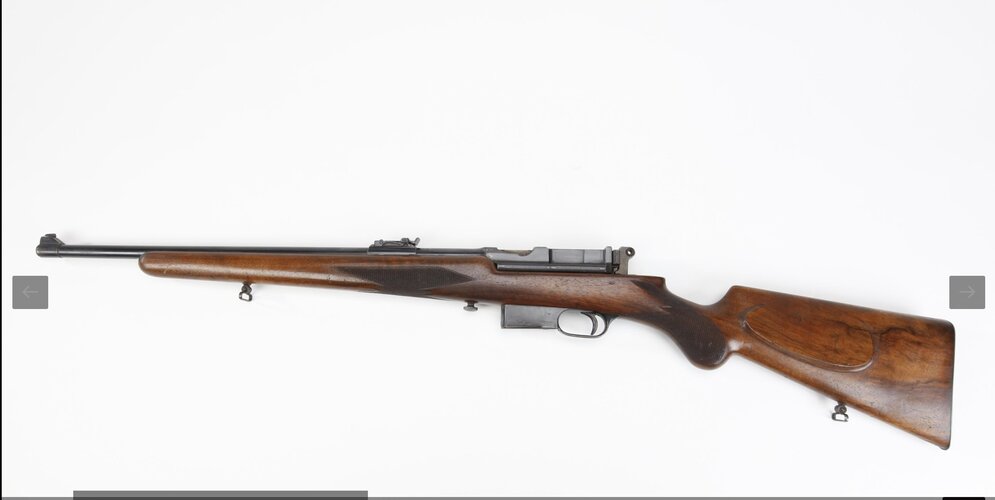Okay, this I did find some more info on, because I initially thought it was mislabeled (there was a Grantabüchse 39 single-shot launcher, and a few Czech-made antitank rifles, but nothing by that exact name). There's not much known about them, but that's
one of four grenade rifle...things developed by Waffenwerke Brünn, the German occupation name for Zbrojovka Brno. All four use the known 46mm and 61mm
Grosse Panzergranate rifle grenades designed for use with the ubiquitous
Schießbecher launcher cup - and as an aside, I think the shell pictured next to it may be an earlier
Gewehr-Panzergranate as the
Grosse Panzergranate rounds look a bit more like Panzerfaust or RPG rounds (see picture).
If you don't want to read that linked Small Arms Review article, here's an abridged version. You'd think at a glance that these are some form of rocket launcher, an obscure branch of the Panzerschrek family tree maybe
, but you'd be wrong. They work in exactly the same way as any other rifle grenade: a 7.92mm blank is loaded into the chamber, which opens by either a rotating or tilting barrel, and the grenade shell is then loaded into the muzzle. What makes them different compared to a normal
Schießbecher is recoil reduction. All four have different implementations of a kind of "floating" barrel and breechblock assembly that recoils against what I think an engineer would call "bigass coil springs", which to be technical don't reduce the recoil but spread out the impulse of it to be more tolerable.
View attachment 754989

